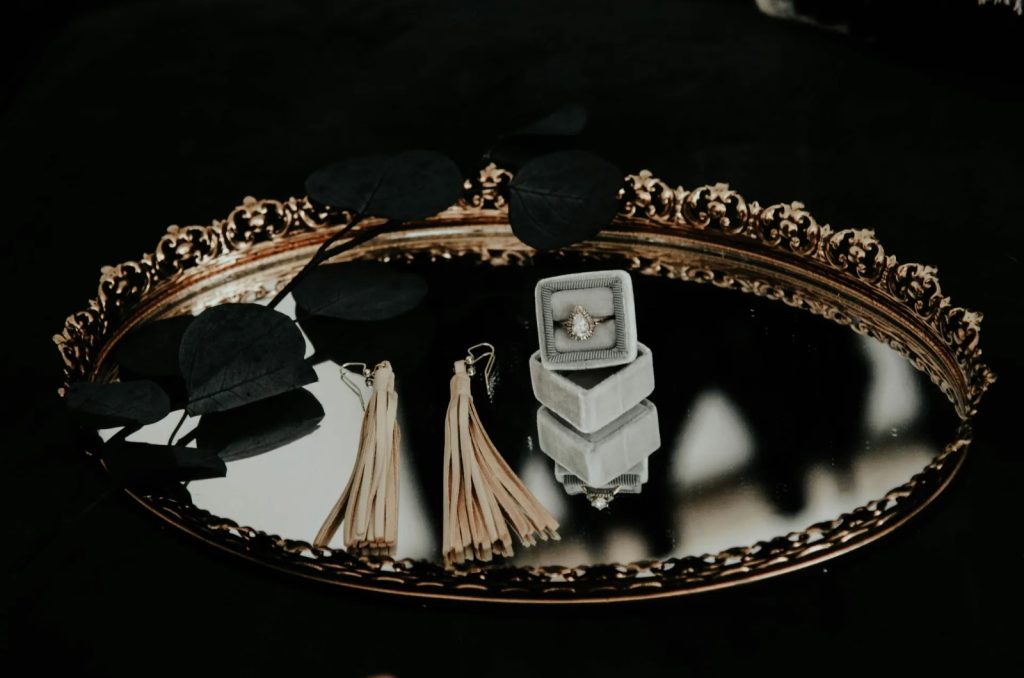In the changing landscape of digital marketing industry, social media has become a crucial tool for jewelry businesses aiming to stand out and thrive. If you own a jeweler store, crafting a robust social media marketing strategy is essential for attracting and engaging your target audience, driving sales, and building a strong presence of brand online. Effective social media marketing for jewelry stores involves more than just posting high-quality images; it requires a deep understanding of your customers’ preferences, values, and behaviors.
Today’s shoppers, especially younger generations, are not only looking for beautiful pieces but also for brands that align with their values, such as sustainability and ethical practices. By leveraging the right social media strategies, you can create a captivating story around your jewelry, encourage a loyal community, and ultimately drive success for your business.
Creating Engaging Visual Content

High-Quality Product Photography
When it comes to jewelry, high-quality product photography is supreme. To create captivating images, you need to focus on several key elements.
First, ensure you are using a clean and simple background to make the jewelry stand out. A plain white or black background is often ideal, as it avoids distractions and allows the piece to be the focal point.
Lighting is another critical aspect. Natural light or a softbox can help create even lighting and avoid harsh shadows.
Experimenting with different angles and distances can also help you find the best composition for your piece. For example, using a macro lens can capture the intricate details and textures of the jewelry, which is essential for showcasing its craftsmanship and quality.
Additionally, enhancing and editing your photos can significantly enhance their appeal. This involves cleaning up the background, removing shadows, and adjusting the brightness and contrast to make the jewelry look as appealing as possible.
Tools like Shopify Magic or photo editing software can be very useful in this process.
Video Marketing
Video marketing is a powerful tool for engaging your audience and providing a more dynamic view of your jewelry. Videos can showcase the jewelry in motion, highlighting its sparkle and movement in a way that static images cannot.
Consider creating short videos that demonstrate how to wear or style different pieces, or videos that provide a closer look at the craftsmanship and details of the jewelry.
Instagram and other social media platforms are ideal for sharing these videos, as they offer features like IGTV, Reels, and Stories that can help you reach a wider audience. You can also use these platforms to share behind-the-scenes content, such as the design process or the story behind a particular piece, which can help build a stronger connection with your customers.
Live Streaming Events
Live streaming events can be a game-changer for your jewelry business, allowing you to engage with your audience in real-time. You can use platforms like Instagram Live, Facebook Live, or even YouTube Live to host events such as jewelry showcases, Q&A sessions, or even live auctions.
During these live streams, you can interact directly with your customers, answer their questions, and provide them with an exclusive look at new or limited-edition pieces. This not only builds trust and engagement but also creates a sense of urgency and exclusivity, which can drive sales and increase brand loyalty.
Utilizing Social Media Platforms Effectively

Choosing the Right Platforms
When it comes to social media marketing for your jewelry business, selecting the right platforms is essential. Each platform has unique characteristics and user demographics, so it’s important to focus on those that align best with your target audience. For instance, Instagram and Pinterest are ideal for visually-driven content, making them perfect for showcasing high-quality photos and videos of your jewelry pieces.
Facebook, while often overlooked in favor of newer platforms, remains a powerful tool, especially for older demographics and for creating a sense of community through features like Groups and Events. It also offers robust advertising options that can help you target specific demographics and behaviors.
Customized Content for Each Platform
Once you’ve chosen the right platforms, it’s essential to tailor your content to each one. For example, Instagram is great for showcasing detailed, high-quality photos and videos, as well as using features like IGTV and Reels to provide a more comprehensive look at your jewelry. Pinterest is ideal for creating themed boards that demonstrate the versatility of your pieces and inspire customers with different styling ideas.
TikTok content should be short, engaging, and often entertaining. Here, you can create quick tutorials, behind-the-scenes clips, or even user-generated content to keep your audience engaged. Facebook content can be more varied, including virtual jewelry showcases, customer testimonials, and exclusive offers for VIP groups.
Understanding the unique features and user behaviors of each platform will help you create content that resonates with your audience and maximizes engagement.
Scheduled Posting and Content Calendars
To maintain consistency and ensure your content reaches your audience at the right time, using scheduled posting and content calendars is vital. Tools like Hootsuite, Buffer, or even the built-in scheduling features on some social media platforms can help you plan and schedule your posts in advance.
A content calendar allows you to organize your content strategy, ensuring that you are posting a balanced mix of promotional, educational, and engaging content. This helps in avoiding last-minute scrambles and ensures that your social media presence remains active and engaging, even during busy periods.
Additionally, scheduling posts at optimal times can increase your reach and engagement. For example, posting during peak hours when your audience is most active can significantly boost the visibility of your content.
Influencer Collaborations and Community Engagement

Partnering with Jewelry Influencers
Partnering with jewelry influencers is a highly effective strategy for expanding your brand’s reach and enhancing its authenticity. When selecting influencers, it’s essential to choose those whose aesthetic and values align with your brand’s identity.
This alignment ensures that the content created is genuine and resonates with the influencer’s audience.
Luxury brands, for instance, can benefit from collaborating with influencers who attend high-end events and embody an aspirational lifestyle. This approach helps create a narrative around your jewelry that is both exclusive and desirable.
Additionally, micro-influencers, who have a smaller but highly engaged follower base, can provide more credible recommendations and foster deeper connections with their audience.
Building long-term relationships with influencers is also key. Instead of one-off collaborations, consider working with influencers over several months or even years through multiple campaigns. This allows the influencer’s audience to become familiar with and educated about your jewelry brand, ultimately leading to higher purchase conversions.
Encouraging User-Generated Content
User-generated content (UGC) is a powerful tool for social proof and community engagement. Encourage your customers to share photos or videos of themselves wearing your jewelry by offering incentives such as discounts, free gifts, or even featuring them on your social media channels.
Influencers can also play a significant role in generating UGC. By collaborating with influencers to create styling guides, tutorials, or limited-edition jewelry collaborations, you can inspire their followers to share their own experiences with your brand.
This not only increases engagement but also provides valuable social proof that can influence potential customers.
Utilize hashtags and encourage customers to tag your brand in their posts to make it easy to track and share UGC. This fosters a sense of community and makes customers feel valued, which can lead to increased loyalty and advocacy for your brand.
Community Building Strategies
Building a strong community around your jewelry brand is essential for long-term success. One effective way to do this is by engaging with your audience directly through social media. Respond to comments and messages promptly, and use social media to ask for feedback and opinions from your customers.
Hosting contests or giveaways featuring your jewelry can also foster community engagement. For example, you can ask followers to share a post, tag friends, or submit their own photos wearing your jewelry to enter a giveaway. This not only increases engagement but also expands your reach as more people become aware of your brand.
Creating exclusive content or offers for loyal customers can further strengthen your community. This could include early access to new collections, special discounts, or behind-the-scenes content that makes them feel valued and part of a special group.
Conclusion
In conclusion, a Social Media Marketing strategy for Jeweler store for a jeweler store hinges on several key elements. First, creating engaging visual content through high-quality photography, video marketing, and live streaming events is essential for capturing your audience’s attention.
Effectively utilizing social media platforms by choosing the right ones, customizing content, and scheduling posts can help you reach and engage your target audience.
Influencer collaborations and community engagement are also vital, as they help build brand loyalty and encourage user-generated content. Strategies like positioning jewelry as everyday luxury, as seen with Mejuri, can significantly boost repeat purchases and customer lifetime value.
To take your jewelry business to the next level, focus on best Social Media Marketing strategy for Jeweler store by building a strong community, leveraging the right social media tools, and continuously refining your marketing strategies based on performance metrics. By implementing these Social Media Marketing strategy for Jeweler store, you can enhance your brand’s online presence, drive sales, and foster a loyal customer base. Take action today to transform your jewelry business into a digital marketing success story.
FAQ
What are the most effective social media platforms for a jewelry store to target its audience?
The most effective social media platforms for a jewelry store include Instagram, Facebook, and Pinterest. These platforms excel at showcasing visually stunning content, enabling direct purchases through posts, stories, or ads. Additionally, they are ideal for leveraging influencer partnerships and user-generated content to engage your audience effectively.
How can I create engaging content for my jewelry store’s social media accounts?
To create engaging content for your jewelry store’s social media accounts, consider these strategies:
Showcase your latest jewelry collections and new pieces.
Share behind-the-scenes content, such as the making of jewelry or office activities.
Highlight customer reviews and testimonials to build trust.
Offer jewelry care tips and educational content about gemstones and jewelry history.
Host contests, giveaways, and quizzes to engage your audience.
Collaborate with influencers and feature user-generated content.
Create themed posts, such as “birthstone of the month,” and provide outfit ideas.
What strategies can I use to increase engagement and interaction with my followers on social media?
To increase engagement and interaction on social media, implement these strategies:
Understand your audience and align content with the platform.
Partner with influencers to bring authenticity and expand your reach.
Create micro-content optimized for the first three seconds to capture attention.
Use storytelling, share behind-the-scenes insights, and highlight customer experiences.
Host live Q&A sessions and utilize polls, surveys, and interactive tools.
Leverage analytics to adapt and refine your content strategy.
How can I integrate my social media marketing with my e-commerce and in-store inventory management?
To integrate your social media marketing with your e-commerce and in-store inventory management:
Use tools and plugins to sync your product catalog with your social media profiles.
Utilize APIs to integrate social profiles with your tech stack and enable social login options.
Optimize your website for mobile shoppers.
Use analytics tools to track performance and ensure inventory is always up-to-date.
Integrate social sharing buttons on your product pages.
Leverage platforms like Shopify that support social selling across various platforms.

Subscribe To Our Newsletter